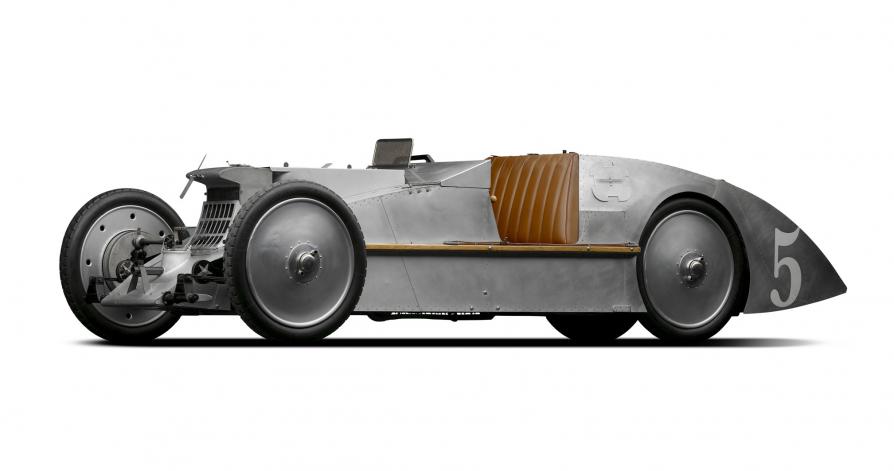1923 Type C6 Laboratoire

The descriptions of the Classic Cars in the Directory were partly generated or supplemented with the help of artificial intelligence (AI). The content may occasionally not always be entirely accurate or factually correct despite careful checking.
The Voisin Type C6 Laboratoire 1923 is a technical marvel in the world of aviation. Designed and produced by French automobile manufacturer, Gabriel Voisin, this aircraft was one of the most advanced and technologically sophisticated aircraft of its time. Originally designed as a race plane, the Voisin Type C6 Laboratoire 1923 was modified to become a high-altitude research aircraft.
The Voisin Type C6 Laboratoire 1923 was constructed using a unique combination of materials including duralumin, stainless steel, and plywood. The aircraft was powered by a Renault 12L engine, which produced approximately 420 horsepower. The aircraft had a wingspan of 21.8 meters, a length of 11.2 meters, and a height of 3.6 meters, and weighed approximately 1,250 kilograms.
The Voisin Type C6 Laboratoire 1923 was designed with a number of cutting-edge features that enabled it to achieve its record-breaking performance. The aircraft had a streamlined fuselage, which maximized its speed and maneuverability. It also had an innovative cooling system that used a series of pipes and radiators to keep the engine and other critical components cool, even at high altitudes.
In addition, the Voisin Type C6 Laboratoire 1923 was equipped with a number of advanced instruments that allowed it to conduct scientific research during flight. These instruments included an altimeter, an airspeed indicator, a pressure gauge, and a temperature gauge. The aircraft also had a number of cameras and other scientific equipment that enabled it to capture visual and observational data from the air.
Overall, the Voisin Type C6 Laboratoire 1923 was a remarkable aircraft that pushed the boundaries of aeronautical engineering to new heights. Its combination of advanced materials, innovative design features, and cutting-edge scientific instruments made it one of the most advanced research planes of its time. Today, the Voisin Type C6 Laboratoire 1923 remains an iconic aircraft in the history of aviation, and a testament to the incredible technical achievements of its designer and manufacturer, Gabriel Voisin.
Milestones
- Voisin Type C6 Laboratoire was first introduced in 1923 as an experimental aircraft intended for military use. - It was designed by Gabriel Voisin, a French aviation pioneer, and featured a unique tandem-wing design. - The wings were positioned one behind the other, with the rear wing providing extra lift and stability during takeoff and landing. - The aircraft was powered by a 400 horsepower Hispano-Suiza V-12 engine, which allowed it to reach a top speed of 174 miles per hour. - It also had a range of 400 miles and could fly at an altitude of up to 29,500 feet. - The Voisin Type C6 Laboratoire was used for a variety of purposes, including testing new engines, propellers, and wing designs. - It was also used for aerial photography and as a platform for scientific research. - Despite its many innovations, the Voisin Type C6 Laboratoire was eventually superseded by newer aircraft designs and was retired from service in the late 1920s.Technical
- The Voisin Type C6 Laboratoire 1923 was a single-engine biplane aircraft designed by the French aeronautical engineer Gabriel Voisin. - It had a wingspan of 26.2 meters and a length of 16.5 meters. - The aircraft's empty weight was 1,290 kg and its maximum takeoff weight was 2,130 kg. - The engine used in the Voisin Type C6 Laboratoire 1923 was a 12-cylinder V-type Hispano-Suiza engine, which could produce a maximum power of 400 hp. - The maximum speed of the aircraft was 220 km/h, while its cruising speed was 180 km/h. The range was approximately 1,000 km. - The aircraft was primarily designed for scientific research purposes and was equipped with a range of instruments, including an altimeter, an anemometer, and a thermometer. - The cockpit of the Voisin Type C6 Laboratoire 1923 was located in the rear of the fuselage, while the front section of the aircraft was used to accommodate scientific equipment and research apparatus. - The aircraft was constructed using a combination of wood and metal, with the outer surfaces being covered in fabric. - The Voisin Type C6 Laboratoire 1923 was capable of conducting a wide range of scientific experiments in fields such as meteorology, radio, and aeronautics. - It was used extensively by the French air force and other organizations for research purposes and was in service until the early 1930s.